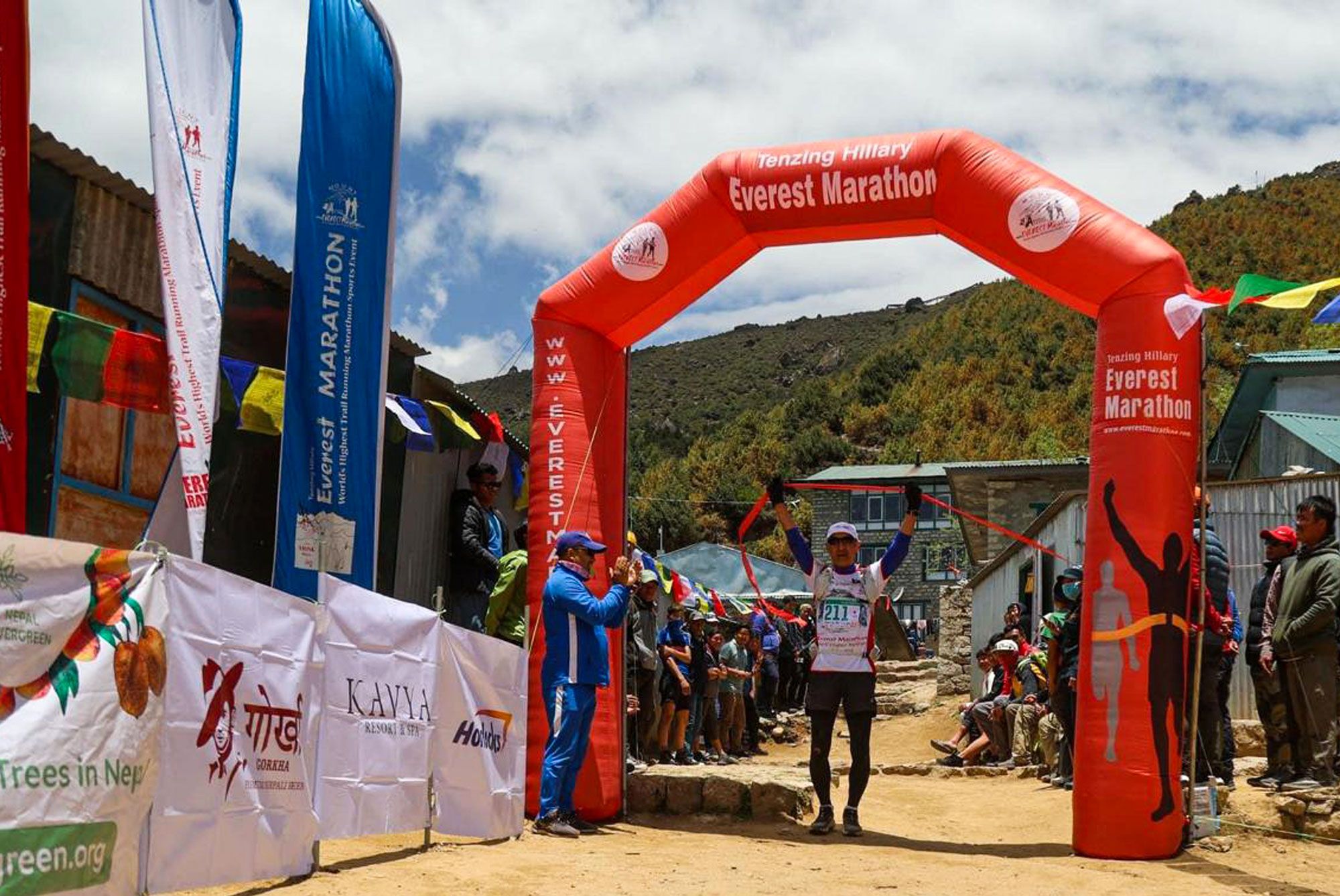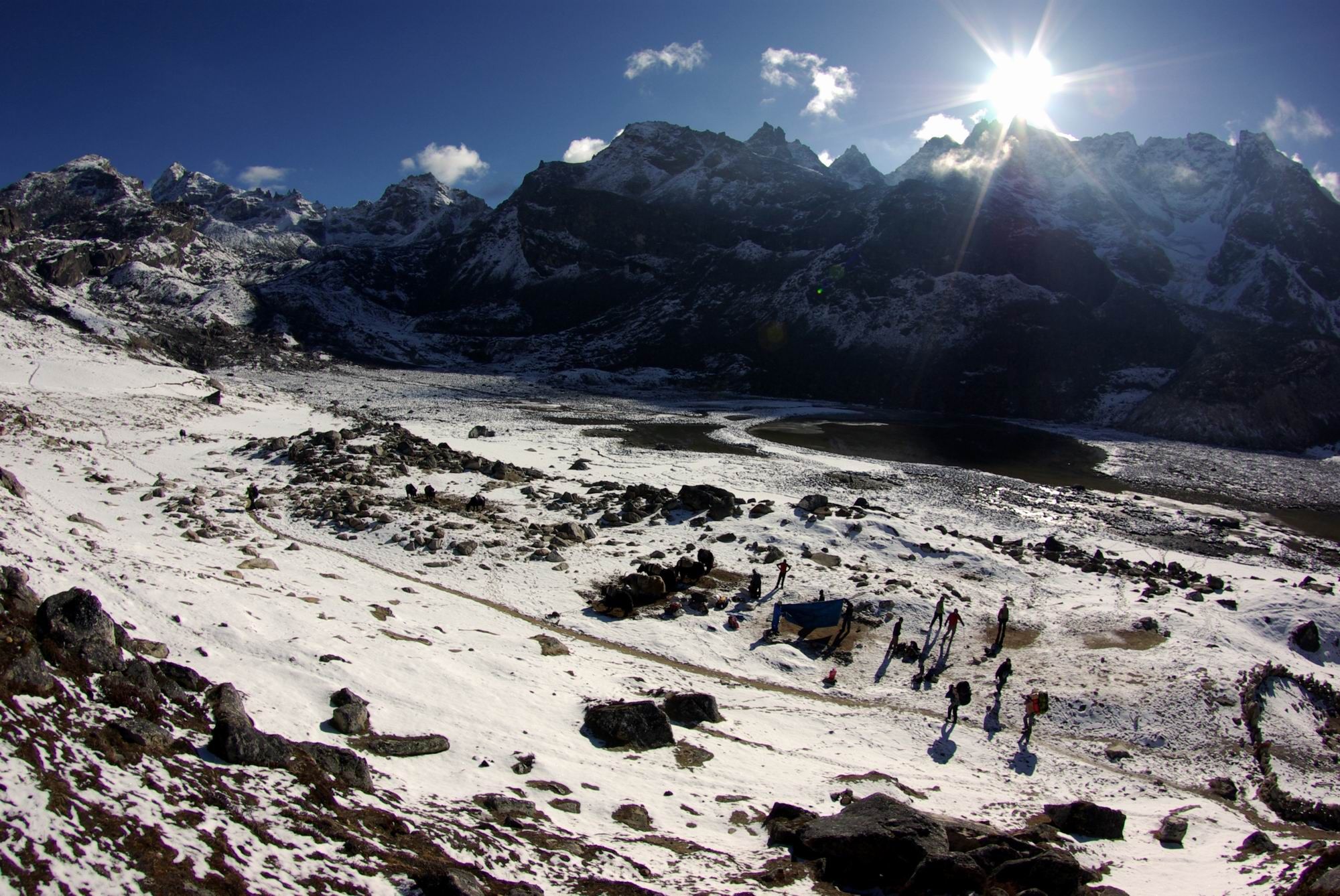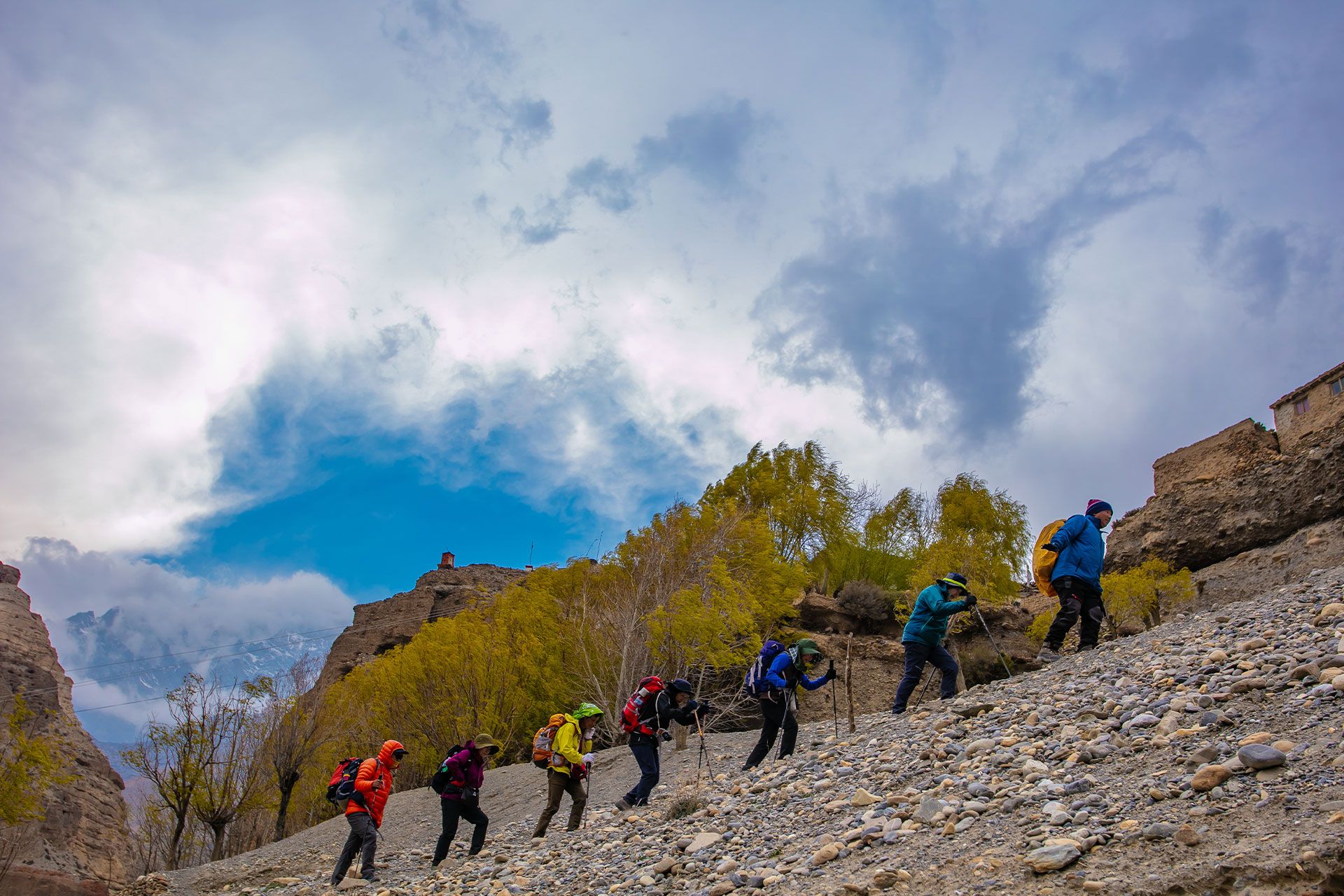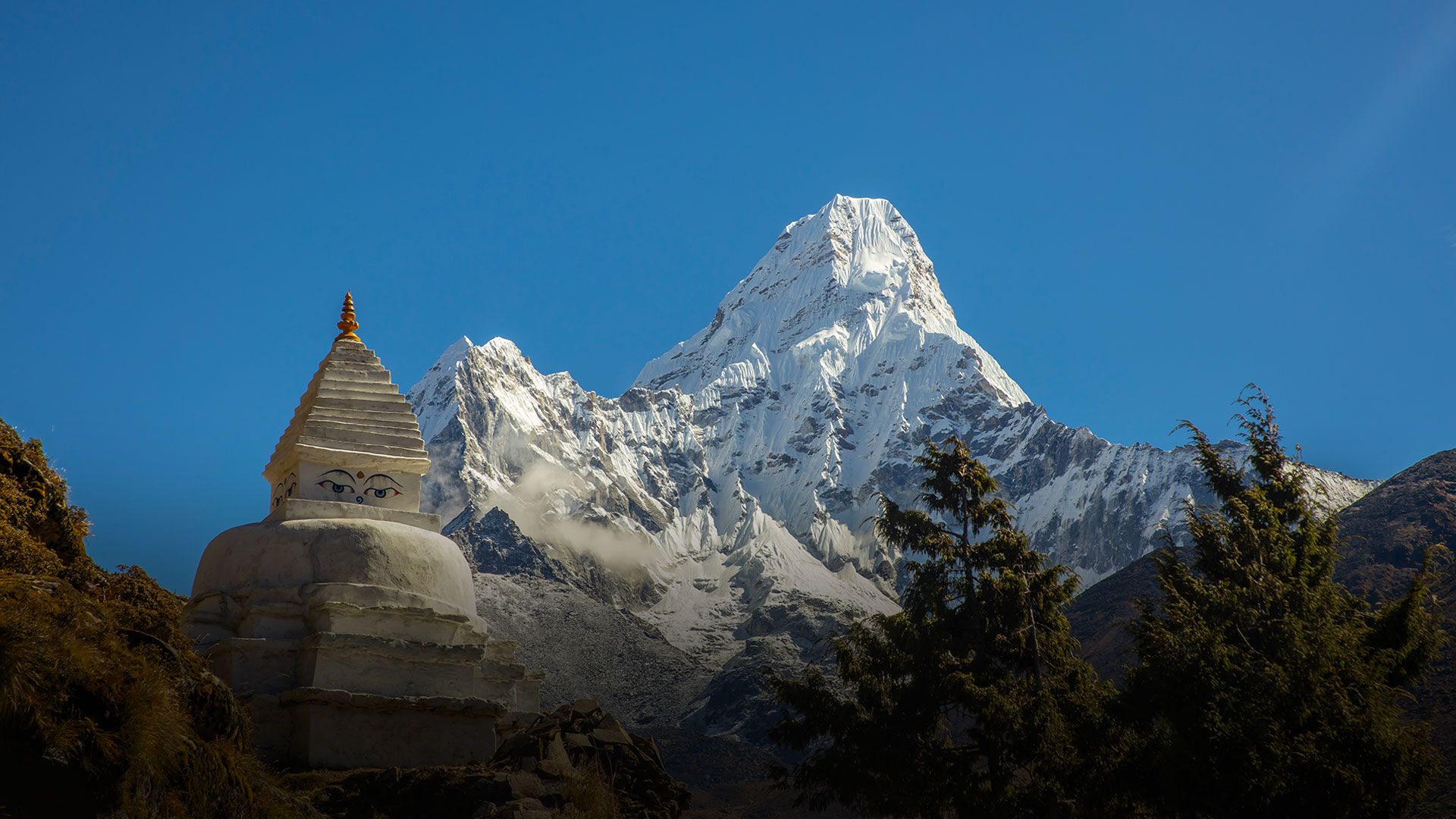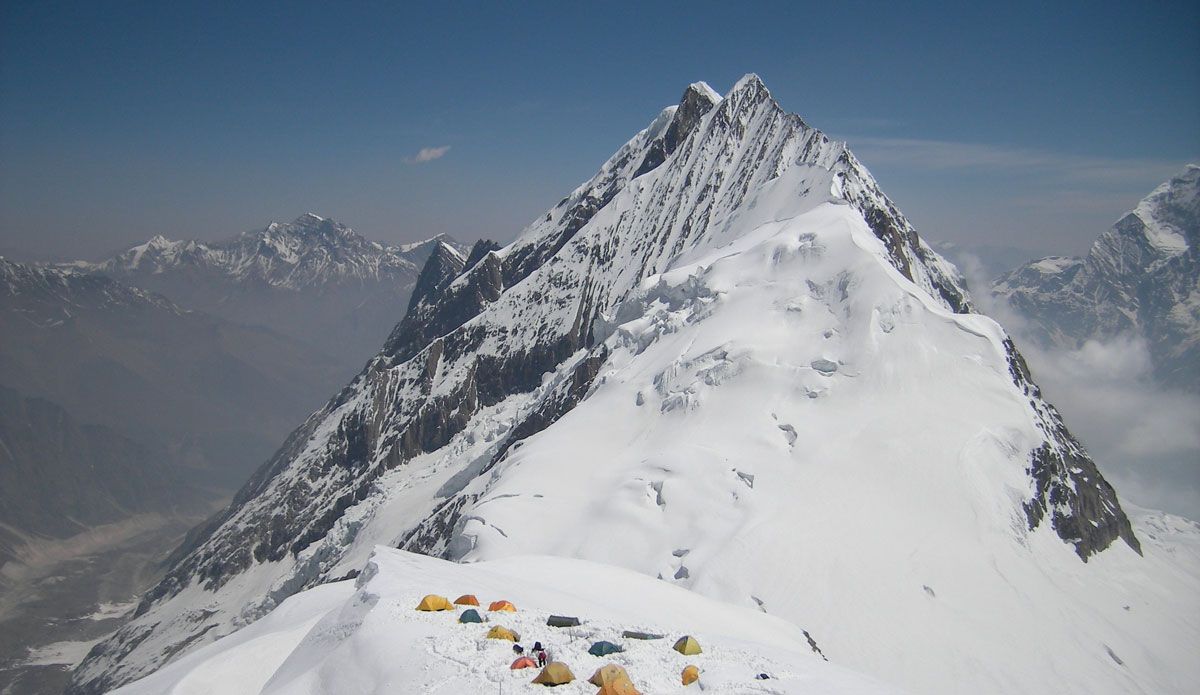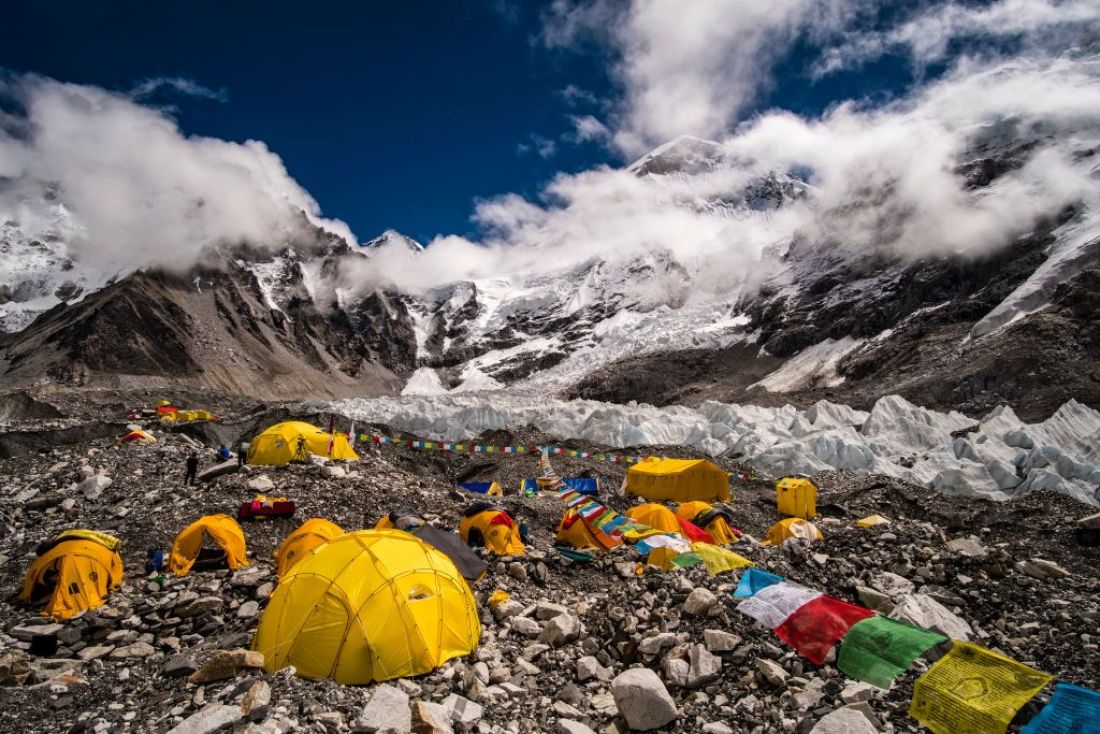
Mount Everest, as we all know, is the highest peak on earth. It takes months of training and breathing masks to go to its 8,848-meter peak. How about a trek to Base Camp? Is it possible to avoid altitude sickness at Everest Base Camp Trek?
One of the most common concerns travelers have before setting out on a Mount Everest Base Camp trek is how they will adjust to the altitude. However, there is a significant difference between reaching Base Camp and reaching the summit. Everest Base Camp is located at 5,364 meters, nearly 3,000 meters below the mountain’s highest point.
It is common to have moderate altitude sickness when trekking to Everest Base Camp. But you want to make sure it doesn’t turn into something more serious. In this blog we will discuss what altitude sickness is and how to properly acclimate on the trek to be safe.
What is altitude sickness ?
Altitude sickness, often known as acute mountain sickness (AMS), is a condition that occurs when people are not adequately acclimatized to high altitudes.
This is not the same as experiencing the usual side effects of being at a high altitude, such as nausea, dizziness, and mild headaches. The ultimate form of this is altitude sickness, which needs to be addressed carefully.
Anywhere over 2,700 meters, it is possible to have altitude sickness, but there are precautions you can do that will significantly reduce your chances of getting it.
The amount of oxygen in the atmosphere at sea level is around 21%. The proportion stays the same as you climb in altitude, but there are less oxygen molecules in each breath. For instance, there are around 40% less oxygen molecules in each breath above 3,600 m (12,000 ft).This is why we breathe more heavily at high altitudes while carrying out activities that are not difficult for us at all at sea level.
What are the causes of altitude sickness at Everest Base Camp?
When trekking Everest Base Camp, if you follow the right measures, you are likely to encounter the typical symptoms of altitude, which we shall discuss later. However, if you ascend the route too quickly, you might be suffering from extreme mountain sickness. This is due to the fact that your body won’t be able to adapt to the reduced oxygen levels at the higher elevations that are closer to Base Camp. It’s crucial to take care of yourself throughout your journey since dehydration, drinking alcohol, and lack of sleep can all lead to altitude sickness.
Symptoms of Altitude Sickness at Everest Base Camp
As previously stated, some altitude symptoms, such as headaches and moderate nausea, are likely to be felt by everyone at altitude in a milder form. Other symptoms, including pins and needles, can be brought on by acclimatization medications like Diamox.
However, if you have symptoms such as a persistent dry cough or fever, you may have fluid in your lungs, which is a dangerous side effect of acute mountain sickness. As an alternative, symptoms including a headache that does not go away with painkillers and water, severe vomiting, clumsiness, extremely high levels of dizziness, numbness, and loss of consciousness may be signs of brain swelling, another serious effect of AMS.
How common is altitude sickness during Everest Base Camp Trek?
We are aware that this may all seem a little frightening, but don’t let it deter you! Extreme altitude sickness is quite uncommon, especially at barely 5,300 meters.
Since the Everest Base Camp is far higher than the 2,700-meter threshold, it is possible to have altitude sickness when walking there. However, if you take the usual precautions to acclimatize correctly, acute mountain sickness should be simple to avoid.
How to avoid altitude sickness at Everest Base Camp trek?
If you are on your way to Everest Base Camp Trek, follow these tips to avoid altitude sickness at Everest Base Camp Trek.
Ascend slowly
Proper Acclimatization Rest
Avoid smoking and alcoholic products.
Stay hydrated .
Maintain Good eating habits
Keep your mental health strong
Our bodies require some time to acclimate to the oxygen levels. Trekkers can modify their bodies by walking and ascending gently. Too much rushed walking can cause fatigue, which can be a key factor in getting altitude sickness.
High altitude trekking requires an acclimatization break of at least two days. You should hike as high as you can during the acclimatization break and then return to a lower location for the night’s sleep.
The first stage of acclimatization takes place in Namche Bazaar (3400 m), from which hikers ascend to Everest View Hotel (3880 m) and return to Namche for the night. The main rule of achieving good acclimatization rest is to get higher and rest lower, therefore don’t be afraid to stroll on your rest day.
The finest place for the second acclimatization is Dingboche (4400 m). Trekkers will arrive at the Nagarshan Hill peak, which is around 5100 m, after resting here. Once there, they must stay for at least 30 minutes before descending to 4400 meters to rest for the night. Acclimatization rest not only assists in preventing altitude sickness but also aids in the body’s recovery of its worn-out muscles and adaptation to the altering oxygen level
The amount of oxygen in the air reduces as altitude rises because it is so thin. Less greenery is seen along the Everest Base Camp trek route due to an increase in altitude. Trekkers must climb and descend hills, which calls for extreme physical fitness. Drinking alcohol, smoking, and using tobacco all cause the body’s water content to drop.
Your cardiovascular system becomes slow and weak as a result. It eventually causes you to get altitude sickness. It is highly recommended that you avoid drinking alcohol and smoking while on the journey. However, since your body has already acclimated to the high altitude, you can drink while descending to a lower level.
Water is the most effective treatment. Always keep your body hydrated. Throughout the journey, consistently sip warm water rather than cold. The easiest strategy to prevent altitude sickness in hilly areas is to drink enough water. Every 30 minutes of walking, it is advised that you should hydrate your body with 500 ml of water.
During high altitude trekking, a lot of people experience appetite loss and end up eating very little. It is really dangerous. Eat more liquid-based foods and avoid leaving your stomach empty. Having a proper diet will help you prevent altitude sickness.
Try to avoid meat within your diet during the trek. While eating meat along the trail is safe, eating meat after passing through Namche Bazaar is highly not recommended. Following that, everything is carried up the mountain by foot or yak. It’s nearly guaranteed that the meat will not be fresh.
Your digestive system is already under stress from trying to adapt to the high altitude, which only makes matters worse. The greatest options for you are vegetables, dal-bhat, and fresh Nepali food. You may also eat an endless supply of Nepali momo and other cuisines. You’ll be safe if you stick to fresh.
Altitude sickness is something that many people worry about. You could occasionally get a disease due to psychological reasons. Consequently, be ready and confident as well. Avoid negative thoughts and instead appreciate the beautiful surroundings around you. Talk more to your guide or fellow hikers, and always have a pleasant attitude.
Medication for Altitude Sickness at Everest Base Camp Trek
Some travelers to Nepal bring Diamox (acetazolamide) medication with them. This can be used to prevent and treat altitude sickness and could be useful if you are only going to be at altitude for a day or so and simply have no time to acclimatize properly. However, for general trekking usage in Nepal we do not recommend taking medications as an alternative to ascending slowly and carefully. Taking such drugs can lead to a false sense of security which could lead to serious problems if you’re up high for any length of time.
Other Health issues while trekking in Nepal
Although altitude sickness is the most common health concern for trekkers in Nepal, there are a few additional potential dangers.
Sunstroke and Heat stroke
Heat stroke and sunstroke are both common. They are really more common than hypothermia, much to the dismay of many aspiring hikers. This is especially true while traveling through the warmer lower valleys and hills in all-day sunlight. When this occurs, try to stay cool, hydrate well (at least 3 liters per day is best), eat something salty, and wear a wide-brimmed hat and sunglasses constantly.
Blisters
Although not life threatening, blisters can be an annoyance on a Nepal trek, and a severe case of blisters can effectively ruin your adventure or forbid you from continuing at all. It is common for blisters to develop when hiking on mountain paths while wearing improperly fitted boots or other footwear that has not had time to break in.
Although altitude sickness is a major concern on the Everest Base Camp trek, you shouldn’t let it halt you from taking part in this incredible adventure. By using these tips, you can significantly lower your risk of developing AMS and increase your chances of having a successful and pleasant trip. In the high Himalayas, safety should always come first, so pay attention to your health and act quickly if any symptoms arise. With careful planning and caution, you can make your Everest Base Camp trek a memorable and safe experience.
At Rolwaling Trek, we plan all the itineraries by considering each and every aspect that will make your trekking in Nepal an unforgettable experience. Contact us to plan your trekking journey.

